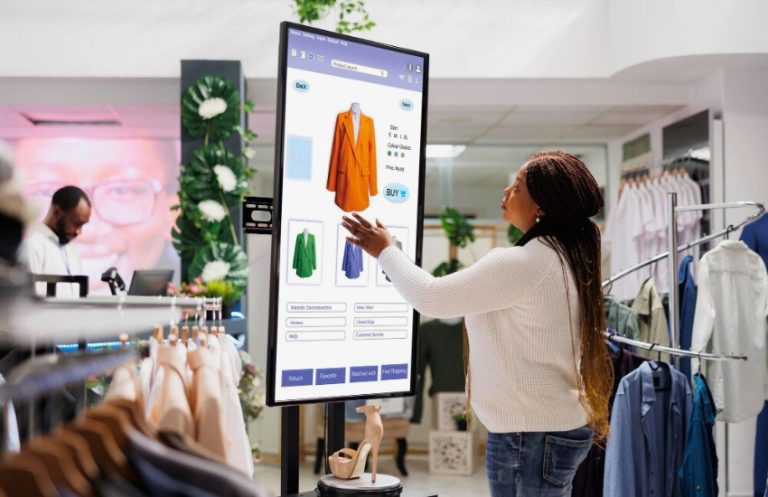Remember 2020?
Of course, you do — the year retailers learned more about supply chains than any MBA program could dream of teaching. Shelves were empty, warehouses were chaotic, and inventory planners were emotionally processing trauma for years.
Fast-forward to 2025, and guess what?
Retailers — from the US to the EU, Canada to China — are over-ordering again.
Not because they want to.
Not because demand is soaring (it isn’t).
But because forecasting is breaking down, consumer behavior keeps swinging like a TikTok trend, and “just-in-case” inventory has replaced “just-in-time.”
According to McKinsey, 39% of retailers admit they’re currently carrying “excess stock levels”, and 57% expect overstocks to worsen in 2025.
Meanwhile:
- Warehouse fees in the US have risen 19% YoY
- EU storage costs have increased 24% due to labor and energy costs
- China’s cross-border fulfillment delays remain unpredictable
- Canada is seeing record-high last-mile costs
Retailers are now stuck in a dangerous loop:
Bad forecasting > Over-ordering > High storage costs > Heavy discounting > Margin loss > Panic > Repeat
But here’s the plot twist:
“Most inventory disasters start in CX, not supply chain. Your support team sees demand shifts weeks before your forecasting tools do.”
— Nadia Ross, Senior Analyst, Retail Systems Observatory (RSO)
And that’s where ServeRetail steps in — using smarter CX, retail helpdesk support, and retail order processing workflows to course-correct inventory strategy long before the numbers start bleeding red.
Let’s unpack why the 2025 inventory crisis is happening… and how the proper support operations can stop history from repeating itself.
Chapter 1: Why Retailers Are Over-Ordering (Again)
Retailers across the world are wrestling with the same issues, but for different reasons in each region.
1. US Retailers: Demand Volatility + Promotional Wars
Consumer demand in the US has become erratic, especially in apparel, electronics, and home improvement.
Key drivers:
- Buyers are waiting for deals, pushing unpredictable demand spikes
- TikTok trends force retailers to chase micro-fads
- Returns (averaging 16.5% across retail) distort actual demand
Plus, retailers still remember the stockouts of 2020 like a horror movie. So they overbuy “just in case.”
2. Canada: Longer Lead Times = Inventory Padding
Canadian retailers often add 10–20% buffer stock to compensate for:
- Cross-border delays from US suppliers
- Weather disruptions
- Longer delivery windows
- Higher expectations for availability
This leads to warehouses filled with slow-moving goods — especially winter apparel and electronics.
3. EU Retailers: Regulation + Logistics Uncertainty
EU retailers battle:
- Cross-border rules
- Higher logistics costs
- Sustainability requirements
- Volatile consumer confidence
So, they overstock to avoid stockouts across multiple markets — France, Germany, Spain, Italy — each needing its own inventory structure.
4. China: Appetite for Global Scaling
Chinese sellers scaling across Amazon, Walmart, TikTok Shop, and Temu often over-order to:
- Beat customs delays
- Prevent negative delivery metrics
- Keep local warehouses full in the US/EU
- Satisfy the “fast ship” badge requirements
It works… until it doesn’t.
Especially when returns hit.
Chapter 2: The Real Villain Nobody Talks About — CX Blind Spots
Most retailers assume inventory problems are caused by:
- Bad forecasting
- Supplier delays
- Poor warehouse planning
But that’s only half the story.
The other half is hiding in plain sight:
Customer interactions.
Support teams see:
- Repeated “Do you have this in size M?”
- Surges in “When will this be back in stock?”
- High return rates for specific SKUs
- Cancelled pre-orders
- SKU/variant confusion
- Complaints about shades, sizing, and compatibility
Yet retailers rarely connect CX signals to inventory planning.
“Inventory doesn’t collapse overnight. It collapses slowly — and CX sees the early cracks first.”
— Elaine Harper, VP Operations, North American Retail Council
This is why intelligent retail helpdesk support + retail order processing services are no longer “customer support.”
They are inventory intelligence engines.
Chapter 3: The 7 Inventory Problems ServeRetail Helps Retailers Fix
Here’s how ServeRetail steps in with global support ops (US/Canada/EU/China) to prevent inventory disasters.
1. Detecting SKU-Level Demand Signals Early
ServeRetail agents log every inquiry:
- “Is the blue variant coming back?”
- “Can I get a size L?”
- “Does this work with iPhone 15?”
This reveals real-time demand indicators that forecasting software misses.
2. Reducing Returns in Apparel, Beauty & Electronics
Returns are the #1 cause of inventory distortions.
ServeRetail reduces them by:
- Size consultation (apparel)
- Shade-matching (beauty)
- Compatibility support (electronics)
Leading to 20–35% lower return volume.
3. Handling Pre-Orders + Preventing Panic Cancellations
Customers cancel when a retailer doesn’t respond quickly.
Retail order processing teams at ServeRetail:
- Manage updates
- Provide ETA clarity
- Reduce cancellations
- Keep demand stable
This protects forecasting accuracy.
4. Real-Time Stockout Alerts
Our support team’s flag:
- High inquiry volume for certain SKUs
- Frequent “out of stock” messages
- Variant-level shortages
- Order bottlenecks
This data goes straight to your ops team.
5. Fixing Inventory Errors That Cause Over-Ordering
ServeRetail catches:
- Duplicate listings
- Wrong inventory counts
- Marketplace mismatches
- Incorrect variant mapping
Especially important for Amazon/Walmart sellers.
6. Warehouse Syncing Across the US, EU, Canada & China
We act as the nerve center between:
- Warehouse
- Marketplace
- Customer
- Brand HQ
This stops slow-moving items from piling up unnoticed.
7. Eliminating “Phantom Demand” From Customer Confusion
Many retailers over-order because they think demand is high.
But often, customer confusion causes:
- Duplicate inquiries
- Wrong product assumptions
- Requests for incompatible products
ServeRetail filters out fake demand signals.
Chapter 4: The Case Study (Based on True Patterns, Anonymous)
A global apparel retailer selling in the US, Canada, Germany, and Australia saw:
- SKU-level returns hit 28%
- Excess stock exceeding $3.2 million
- Sizes S and XL are overstocked
- Sizes M and L are constantly out of stock
ServeRetail stepped in to manage:
- Fit consultations
- Pre-sale guidance
- Warehouse syncing
- Variant-level customer tracking
Within 90 days:
- Returns dropped to 16%
- Overstock was cleared by 43%
- Wrong-size orders reduced by 31%
- Accurate forecasting resumed
This is why inventory strategy now lives inside CX.
Chapter 5: Global Insights from Industry Leaders
“Retailers still underestimate how powerful CX data is for forecasting. If your support team isn’t feeding your planners weekly insights, you’re guaranteed to overstock.”
— Marco Fischer, EU Retail Logistics Council“In 2025, inventory health will be decided by whoever can sync CX, warehouse, and analytics fastest. ServeRetail is one of the few BPOs built for this.”
— Sandra Luo, APAC Commerce Institute
Chapter 6: The ROI When ServeRetail Fixes Inventory Strategy
Retailers see massive gains when support ops align with forecasting:
- 20–35% reduction in returns
- 30–50% drop in overselling and underselling
- Improved forecast accuracy within 45–60 days
- Higher conversion rates
- Better marketplace rankings
- Balanced SKU velocity
- Reduced warehouse costs globally
This applies across verticals:
- Apparel
- Consumer electronics
- Beauty
- Home improvement
- CPG
- Lifestyle
Chapter 7: The Future of Inventory Management Is CX-Driven
Forecasting tools alone won’t save retailers in 2025.
What will?
- Real-time customer intention data
- Faster retail helpdesk support
- Accurate retail order processing
- Smarter product guidance
- SKU-level analysis
- Regional consumer behavior insights (US vs EU vs Canada vs China)
ServeRetail integrates all of this into one global intelligence hub.
Inventory strategy becomes proactive — not reactive.
Conclusion: Your Inventory Problems Are Fixable — If You Fix the Right Things
Retailers don’t need more warehouses.
They need more clarity.
And that clarity comes from CX — the earliest, richest indicator of demand truth.
ServeRetail helps retailers:
- Reduce returns
- Right-size inventory
- Improve forecasting
- Fix SKU mapping
- Prevent stockouts
- Avoid overstocks
- Identify hidden demand patterns
Across the US, Canada, the EU, and China, ServeRetail is the retail BPO partner helping brands break the over-ordering cycle once and for all.
Ready to stop the 2025 inventory crisis from hitting your business?
ServeRetail can help you stabilize demand, align forecasting, and build a CX-driven inventory strategy.





